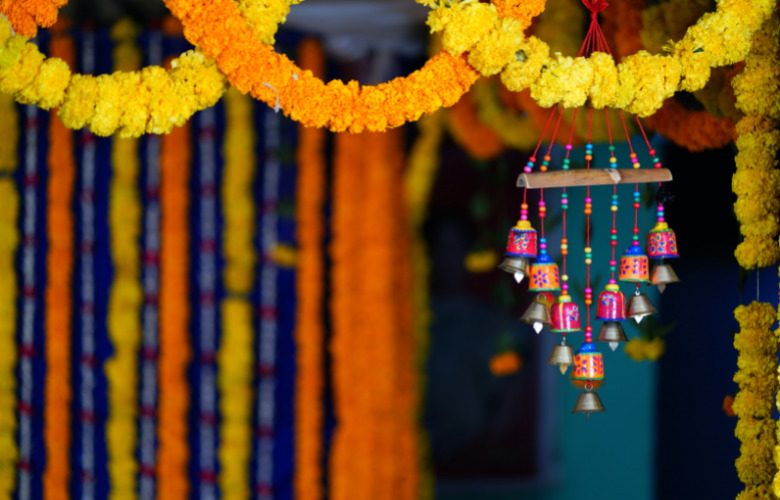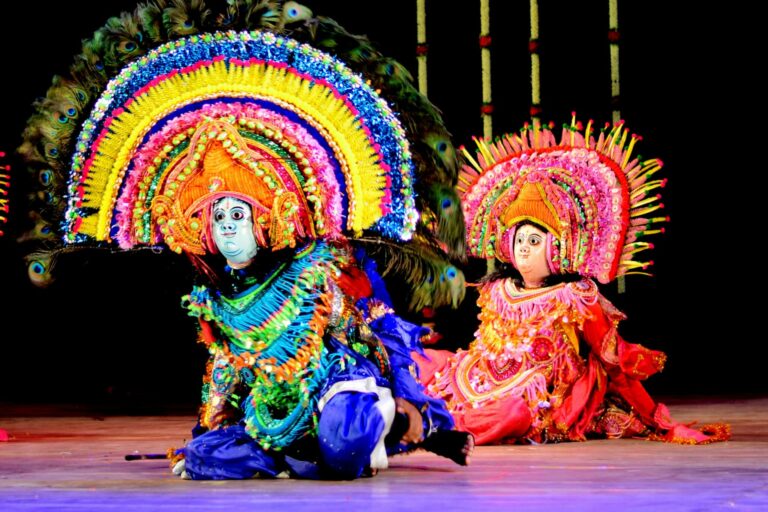
Indian Folk theatre is a fusion of dance, drama, stylized speech, and spectacle. Furthermore, Indian folk theatre has deep roots in local identity and native culture. It is an important tool of expression and communication going back centuries. In many ways, even still today, this ancient Indian art form reflects the social and political realities of times long past as well as of the present times in which the performance is staged.
Indian folk theatre is one of the most ancient forms of theatre. It goes back to the 4th century BC. And features detailed textual, sculptural, and dramatic effects.
Like traditional music and dance, Indian folk theatre performances are defined by the concept of Natya. Which is a Sanskrit word for drama but encompasses dramatic narrative, virtuosic dance, and music.
On the Facts and Details website, the authors describe: “India is home to hundreds of living theatrical traditions. Some of them are archaic rituals that have been cherished by small rural communities for several centuries, some are age-old classical traditions of dance-drama related to the Natyashastra, the ancient Drama Manual, and some of them are popular forms of folk entertainment reflecting the changing tastes of their audiences.”

In ancient times, Indian theatre exerted its influence beyond its borders, reaching ancient China and other countries in the Far East.
Sanskrit dramas were staged at seasonal festivals or to celebrate special events.
Between the 15th and the 19th centuries, actors and dancers were given special titles of distinction in the courts of several Indian kings. Often, the competition between drama actors and groups was quite pronounced.
For example, in the 18th century, the Peshwas of the Maratha kingdom were patron of the Tamasha folk theatre. The Maharajas of Travancore and Mysore then competed with each other to establish who owned the best drama troupe.
Often performances were produced on a grand scale. Roughly 200 years ago, the Maharaja of Banaras, for example, was the producer and patron of the Grand Ramlila. A 31-day play based on Ramayan with spectators numbering in the thousands.
The infusion of local myths, costumes, and masks within folk theatre performances in each respective region resulted in the evolution of diverse regional styles of Indian folk theatre.
British rule did not change these cultural practices. The staging of traditional folk theatre
continued in the princely courts throughout colonized India.
As for the storylines of each individual production: “The plots of the plays are regularly supplied by the Puranas, or the mythological stories. And the great epics, the Mahabharata and the Ramayana. These corner stones of Indian thinking and imagery served the culture more or less similarly as the ancient Greek literature and mythology did in the Western world. They have been recycled and reinterpreted again and again for over two millennia.” [Source: Dr. Jukka O. Miettinen, Asian Traditional Theatre and Dance website, Theatre Academy Helsinki]
In the absence of urban theatre in most Indian cities (with the exception of metropolises
like Kolkata, Delhi, Mumbai, Chennai, and Bengaluru), folk theatre has kept the rural audiences entertained for centuries.
It has also played an important part in the growth of modern theatres in different languages throughout India.
Bhartendu Harishchandra, a 19th-century Indian drama writer who is also known as the father of Hindi theatre, used to combine folk conventions with Western theatrical forms that were popular at that time.
While some Indian folk theatre forms like Raslila, Nautanki and Ramlila are recognized all over the country, there are some which, in spite of being equally amazing, remain largely unnoticed. E.g., Koodiyattam, Yakshagana, Swang, Jatra, Bhavai, etc.
Today, Indian folk theatre is considered an art form that keeps the basic elements of drama intact, while taking on the ancient as well as contemporary stories and flavours of whichever respective region it stems from.
This makes Indian folk theatre an immensely important conduit which helps preserve the country’s diverse, rich, and complex cultural heritage.
Sources:
Facts and Details: Theatre in India
The article “Setting the Stage: 12 Little Known Traditional Folk Theatre Forms of India”
Theatre of India on Wikipedia
Khalil Oghab, the Father of Iranian Circus
The Importance of Kindness in Entertainment


Liam Klenk was born in Central Europe and has since lived on four continents. Liam has always been engaged in creative pursuits, ranging from photography and graphic design, to writing short stories and poetry, to working in theatre and shows. In 2016, Liam published his first book and memoir, 'Paralian'.
Read Full Profile© 2021 TheatreArtLife. All rights reserved.

Thank you so much for reading, but you have now reached your free article limit for this month.
Our contributors are currently writing more articles for you to enjoy.
To keep reading, all you have to do is become a subscriber and then you can read unlimited articles anytime.
Your investment will help us continue to ignite connections across the globe in live entertainment and build this community for industry professionals.